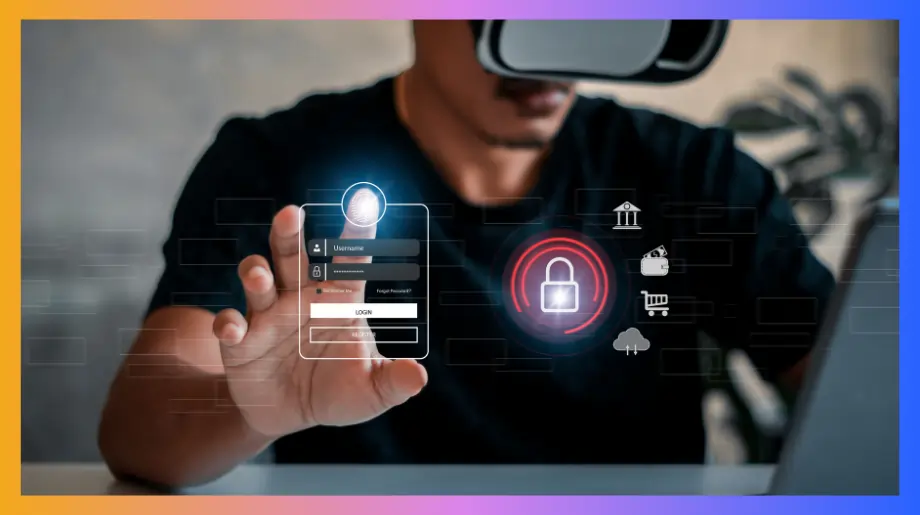In these modern times where there are new types of threats now and then causing havoc all over the world, that’s why every company needs to follow the best cyber security practices. When you think along the lines of having a streamlined “Cyber Security” practice, IAM comes into play !!
Before delving deeply into the topic of "How IAM enhances cyber security,"
Let’s see,
What IAM ( Identity Access Management) entails!!
IAM is abbreviated as “Identity Access Management“. It is an essential component in the space of cyber security which ensures the access of the right individuals to their appropriate resources at the right time and for the right reasons. It is a security discipline that manages digital identities and also the provisioning of identity-specific access and resources.
Why is Identity Access Management important?
IAM comprises the process and feature that allows the IT admins to assign each entity a digital identity, authorize access, monitor, authenticate, and manage the identities. The ability for managers to restrict which employee categories to access certain data or applications gives your company's network an additional degree of protection.
IAM practices also allow you to keep track of the employee activity. Only employees with access privileges can view programs and applications thus making it difficult for unauthorized individuals to access. Pre-set parameters can be established to catch hold of any suspicious activities or errors.
Apart from the regular employees in the organization, IAM provides business partners and contract basis, remote users or customers secure access that enables the employees to seamlessly work regardless of their work location with centralized management granting them access to the required tools. Generally, companies that are planning on expanding their staff require the IAM practices enabling them to grant required permissions as they climb up the hierarchy ladder with updated qualifications and designation.

Key Components of IAM
- Identity Management: This component mainly focuses on the creation, deletion, and management of user accounts and digital identities.
- Authentication: The verification of identities of the users through various mechanisms such as biometrics, multi-factor, SSO (Single Sign-On), and passwords.
- Authorization: This component determines the access of resources and actions to the users based on their roles or predefined policies of the organization.
- Access Management: Access control policies are implemented to guarantee that users have the necessary access to resources. Additionally, access activities are continuously monitored and logged to ensure compliance with auditing requirements.
Advantages of IAM
- Improved Compliance: Numerous regulatory frameworks, including HIPAA, PCI DSS, and GDPR, necessitate the implementation of IAM controls by organizations to safeguard sensitive data and adhere to regulatory requirements.
- Centralized Administration: IAM simplifies the management of the users and their digital identity along with their access control across multiple applications.
- Clear Visibility: It enables bigger organizations to have greater visibility into user activities and enables them to monitor, detect, and respond to security incidents quickly.
- Seamless User Experience: Users being provided with the single sign-on ( SSO) across applications enables them to access multiple applications and systems with a single set of credentials.
- Enhanced Security: IAM makes sure that only authorized users have access to respective applications and data thus reducing the risk of attacks, data vulnerabilities, and other security risks.
- Minimize Help Desk Services: IAM evaluates the user's needs before password reset, with help desk support in streamlining the process. User authentication is essential for identity verification without disrupting the system administrator, enabling them to focus on other business priorities that drive profitability.
- Improved disaster recovery: If data recovery becomes necessary, these security systems can prove to be highly beneficial. By having a centralized location to manage user access, it guarantees that users will be able to access crucial data or systems, even if an IT disaster occurs.
- Improved scalability: This advantage has the potential to enhance scalability by offering a centralized approach to access management. Through IAM, administrators can effortlessly add or remove users as required. Additionally, IAM tools can contribute to minimizing the necessity for manual interventions. The implementation of this framework presents prospects for expansion and improved scalability. The transfer of services crucial for onboarding new users, coupled with the reduction in IT manpower, results in a more favorable return on investment for the IT department.
- Cost Reduction: Implementing an IAM system can lead to cost reduction for your company. By consolidating user accounts across various systems, companies can minimize the need for multiple accounts. Additionally, an IAM solution can contribute to lowering licensing fees and decreasing the reliance on IT support. Furthermore, the implementation of IAM cyber defense not only enhances security but also brings about cost savings.
Now that we have a good grasp on what IAM (Identity Access Management) is and the key components and perks of practicing it.
How IAM Enhances Cyber Security?
1. Improved Authentication Security:
- Multi-Factor Authentication (MFA): MFA greatly diminishes the likelihood of unauthorized access caused by compromised credentials by mandating the use of multiple verification methods, such as passwords and fingerprints or FaceID.
- Single Sign-On (SSO): SSO allows users to log in once and gain access to multiple systems, reducing password fatigue and the likelihood of password-related security breaches.
2. Granular Access Control:
- Role-Based Access Control (RBAC): Users are allocated distinct roles that come with precise permissions, guaranteeing that they possess only the essential access required to carry out their tasks, thereby reducing the likelihood of privilege misuse.
- Least Privilege Principle: Users are granted the minimum levels of access—or permissions—needed to perform their job functions, reducing the attack surface.
3. Enhanced Monitoring and Auditing:
- Access Logs & Audits: IAM systems record all access events, allowing security teams to promptly identify any abnormal or unauthorized activities.
- Real-Time Monitoring: Continuous surveillance of access requests and behavior enables prompt detection and handling of potential security risks.
4. Streamlined User LifeCyle Management:
- Provisioning and De-provisioning: The automation of adding, updating, and removing user access by changes in employment status or job role effectively minimizes the likelihood of dead accounts or excessive access.
- Compliance & Government: It guarantees that access policies adhere to both regulatory requirements and organizational policies, thereby minimizing the possibility of incurring penalties due to non-compliance.
5. Protection Against Insider Threats:
- Behavioral Analytics: Identity and access management systems can leverage machine learning to assess user actions and identify irregularities that could signal potential insider risks or compromised credentials.
Conclusion:
IAM( Identity Access Management) plays a crucial role in bolstering cybersecurity through strong authentication, accurate access control, ongoing monitoring, and effective user lifecycle management. Through the adoption of thorough IAM tactics, companies can greatly reduce the dangers linked to unauthorized access and safeguard valuable data and essential assets from cyberattacks.





















